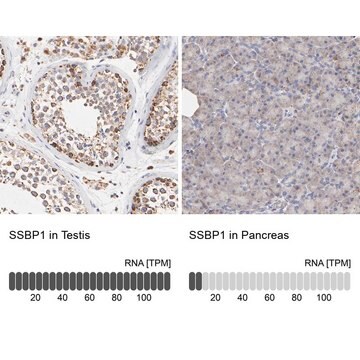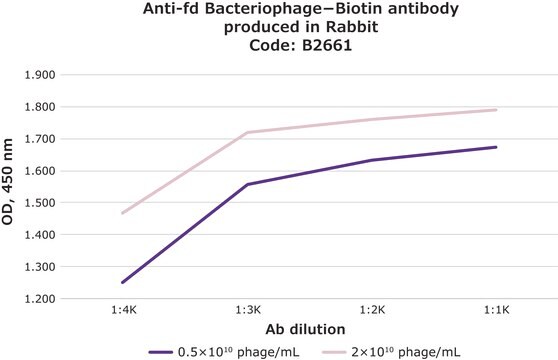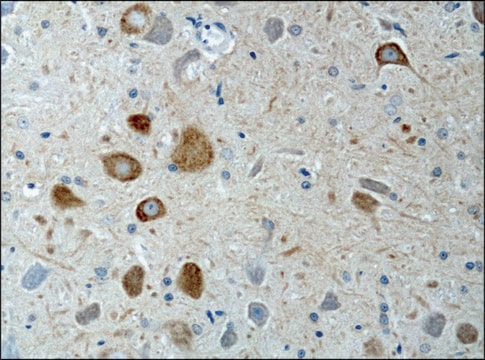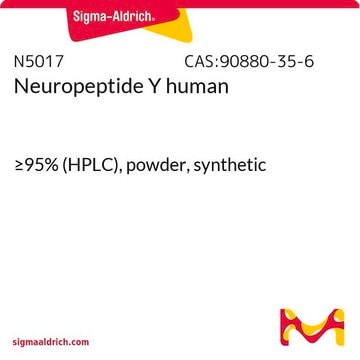P9795
Anti-Rabbit IgG (whole molecule)−R-Phycoerythrin antibody produced in goat
affinity isolated antibody, buffered aqueous solution
Sign Into View Organizational & Contract Pricing
All Photos(1)
About This Item
Recommended Products
biological source
goat
conjugate
phycoerythrin (R-PE) conjugate
antibody form
affinity isolated antibody
antibody product type
secondary antibodies
clone
polyclonal
form
buffered aqueous solution
technique(s)
indirect immunofluorescence: 1:20
shipped in
wet ice
storage temp.
2-8°C
target post-translational modification
unmodified
Looking for similar products? Visit Product Comparison Guide
General description
IgGs are glycoprotein antibodies that modulate several immune responses. Rabbit IgGs against target proteins are often used as primary antibodies in various research applications. Thus, secondary anti-rabbit IgGs conjugated to a detectable substrate are useful tools for the analysis of target proteins. Anti-Rabbit IgG (whole molecule)-R-Phycoerythrin antibody is specific for rabbit IgG. The product does not react with human serum proteins.
Immunogen
Purified rabbit IgG
Application
Anti-Rabbit IgG (whole molecule)-R-Phycoerythrin antibody is suitable for use in flow cytometry . The antibody can also be used for indirect immunofluorescence (1:20).
Applications in which this antibody has been used successfully, and the associated peer-reviewed papers, are given below.
Immunofluorescence (1 paper)
Western Blotting (1 paper)
Immunofluorescence (1 paper)
Western Blotting (1 paper)
Other Notes
Antibody adsorbed with human serum proteins.
Physical form
Solution in 0.01 M phosphate buffered saline, pH 7.4, containing 0.1 mM EDTA, 1 mM iodoacetamide, 1% bovine serum albumin and 15 mM sodium azide
Disclaimer
Unless otherwise stated in our catalog or other company documentation accompanying the product(s), our products are intended for research use only and are not to be used for any other purpose, which includes but is not limited to, unauthorized commercial uses, in vitro diagnostic uses, ex vivo or in vivo therapeutic uses or any type of consumption or application to humans or animals.
Not finding the right product?
Try our Product Selector Tool.
Storage Class Code
10 - Combustible liquids
WGK
nwg
Flash Point(F)
Not applicable
Flash Point(C)
Not applicable
Choose from one of the most recent versions:
Already Own This Product?
Find documentation for the products that you have recently purchased in the Document Library.
S Miike et al.
Journal of immunology (Baltimore, Md. : 1950), 167(11), 6615-6622 (2001-11-21)
Protease-activated receptors (PARs) are a unique class of G protein-coupled receptors, which are activated by proteolytic cleavage of the amino terminus of the receptor itself. PARs are most likely involved in various biological responses, such as hemostasis and regulation of
Charlotte Vaysse et al.
Oncotarget, 6(37), 39924-39940 (2015-10-27)
Dysregulated expression of translation initiation factors has been associated with carcinogenesis, but underlying mechanisms remains to be fully understood. Here we show that eIF4H (eukaryotic translation initiation factor 4H), an activator of the RNA helicase eIF4A, is overexpressed in lung
Min-Hyung Cho et al.
Nature communications, 6, 7821-7821 (2015-07-23)
DOT1L has emerged as an anticancer target for MLL-associated leukaemias; however, its functional role in solid tumours is largely unknown. Here we identify that DOT1L cooperates with c-Myc and p300 acetyltransferase to epigenetically activate epithelial-mesenchymal transition (EMT) regulators in breast
Our team of scientists has experience in all areas of research including Life Science, Material Science, Chemical Synthesis, Chromatography, Analytical and many others.
Contact Technical Service








